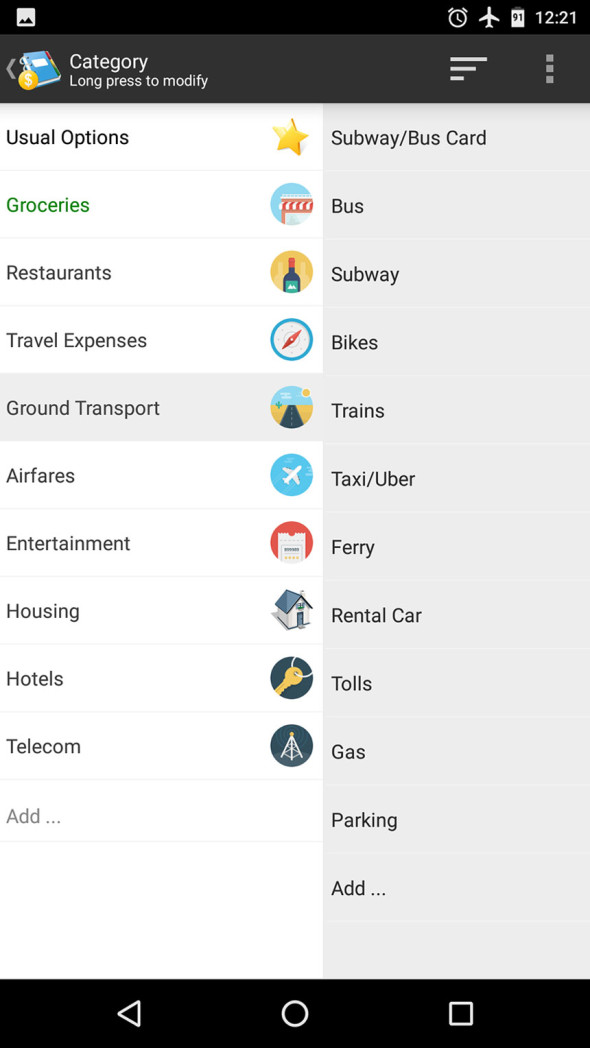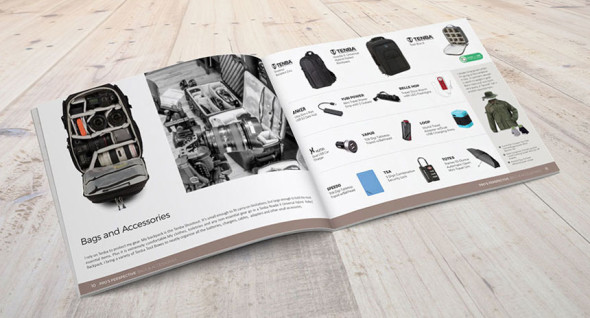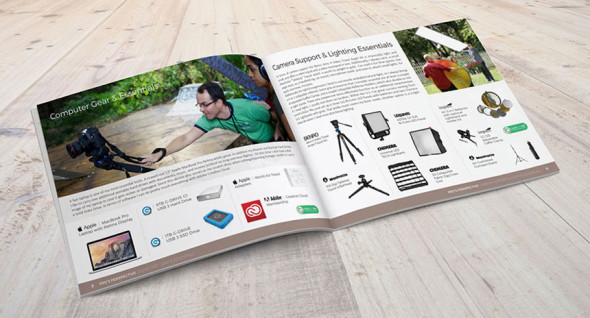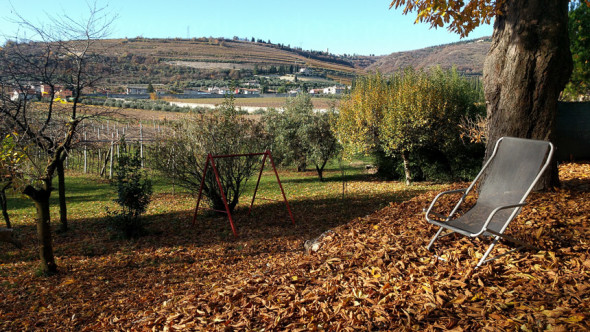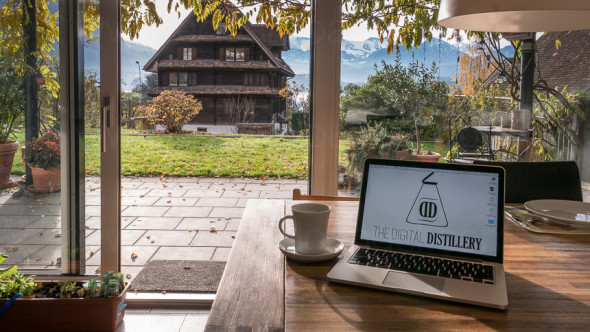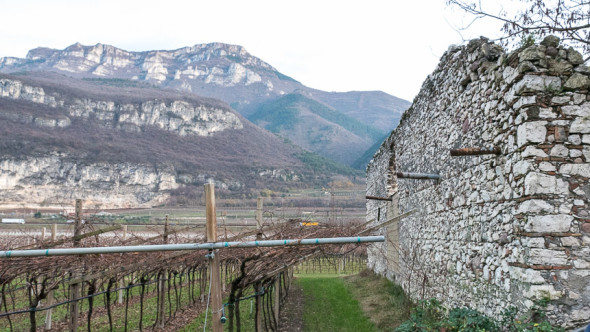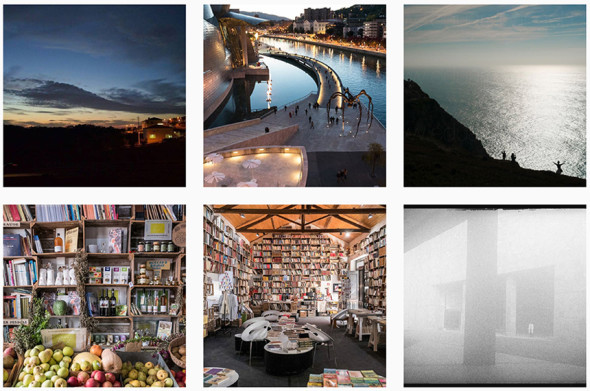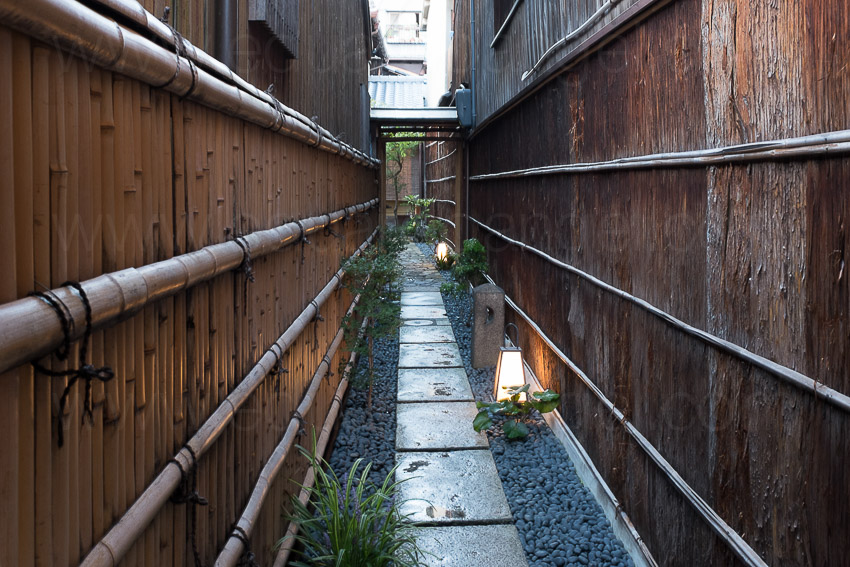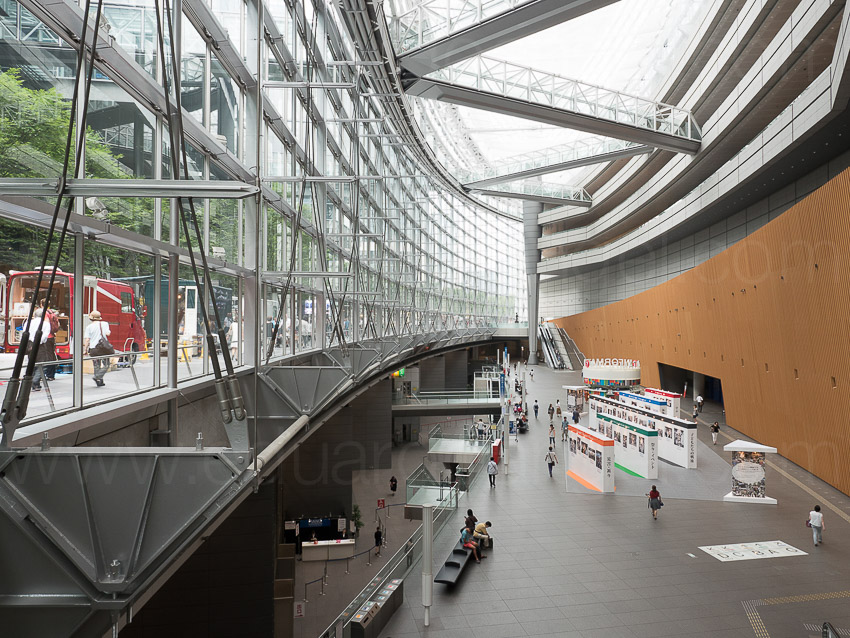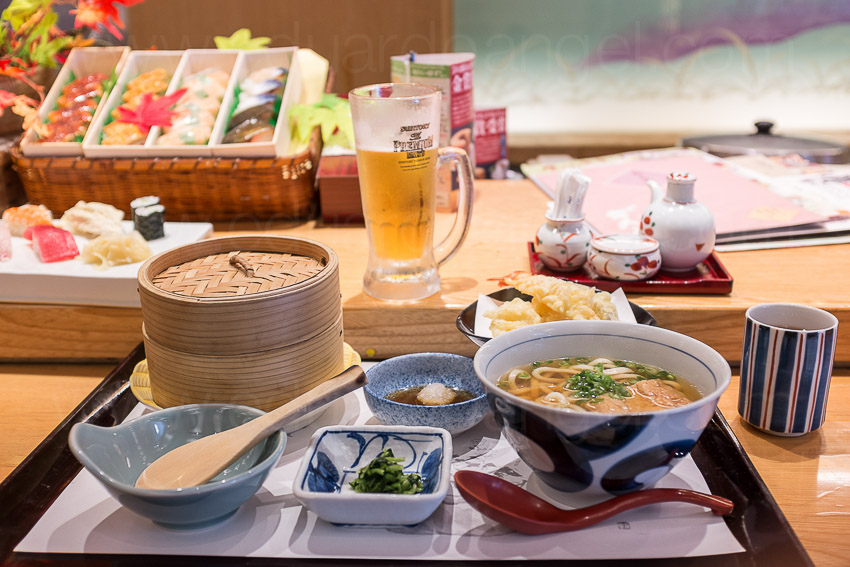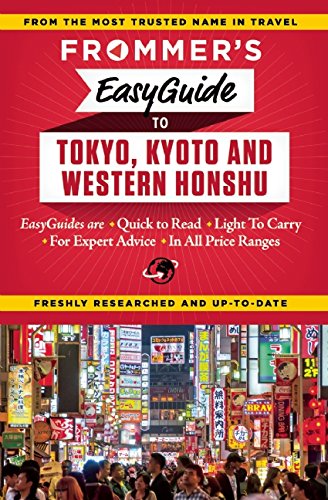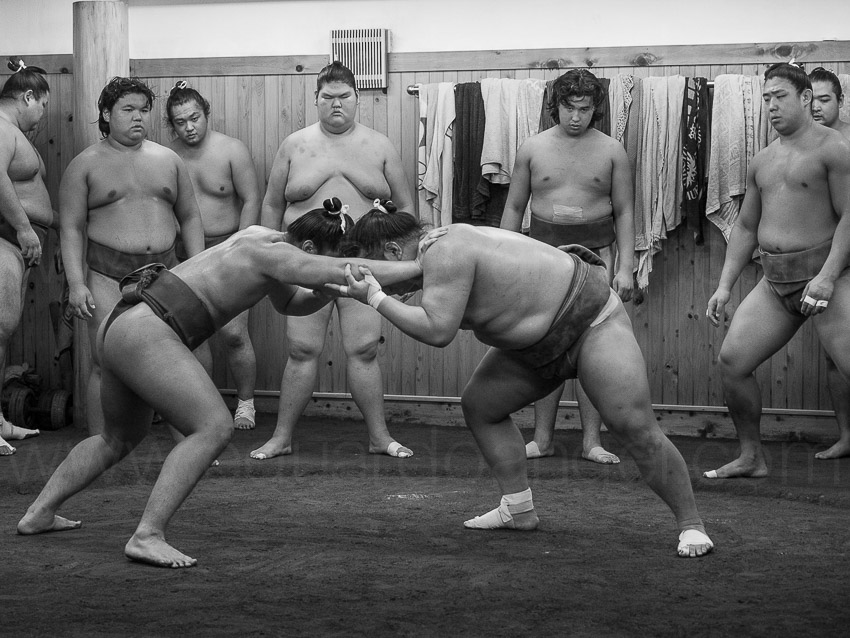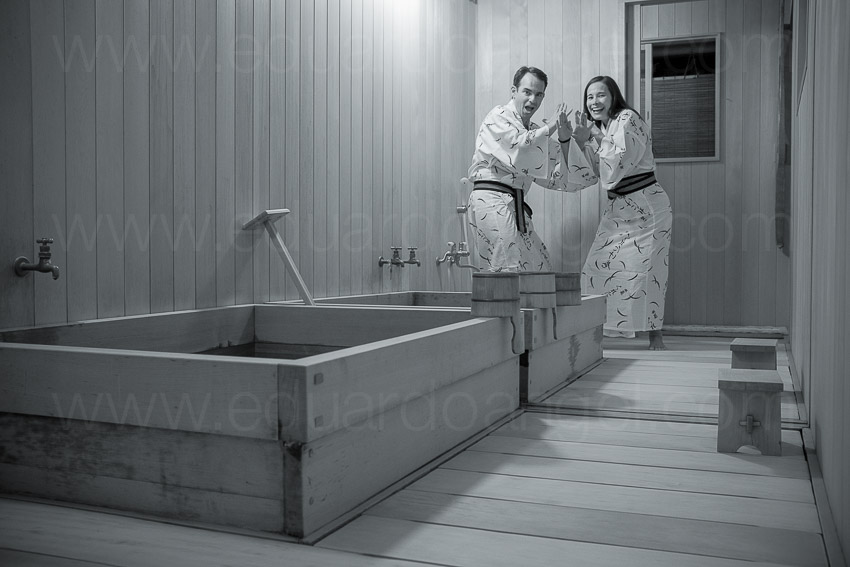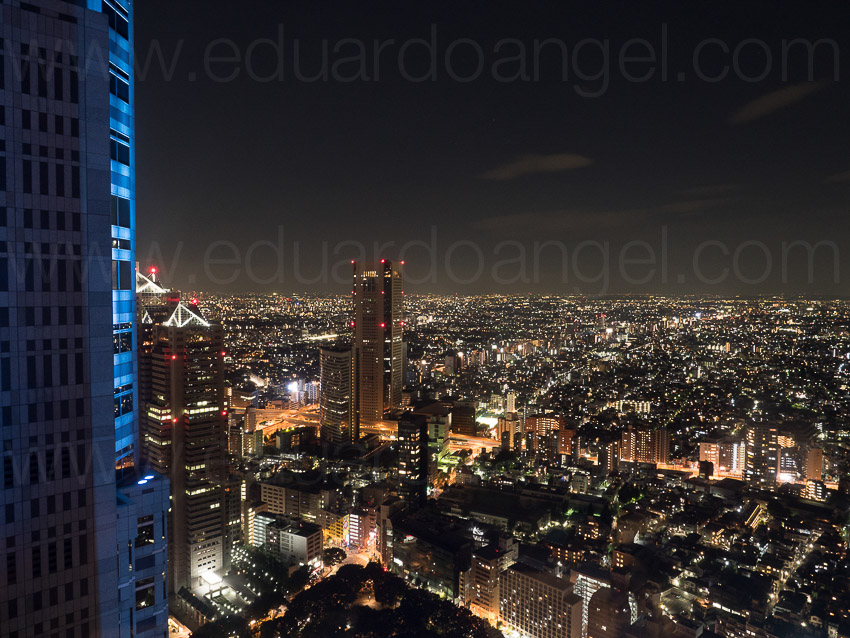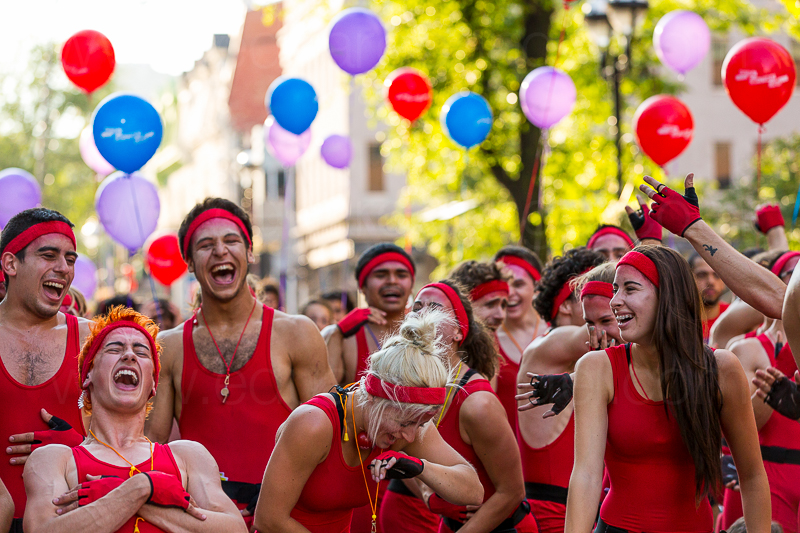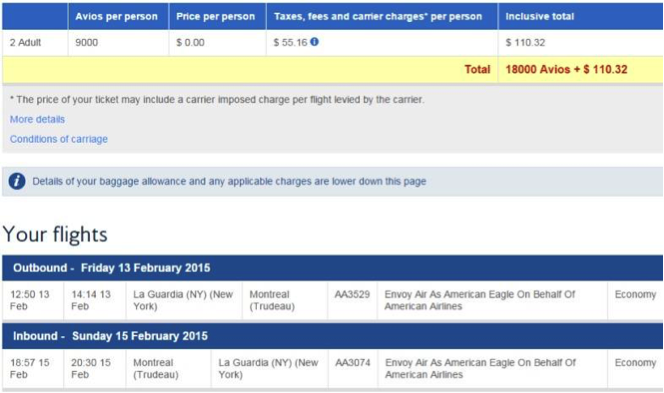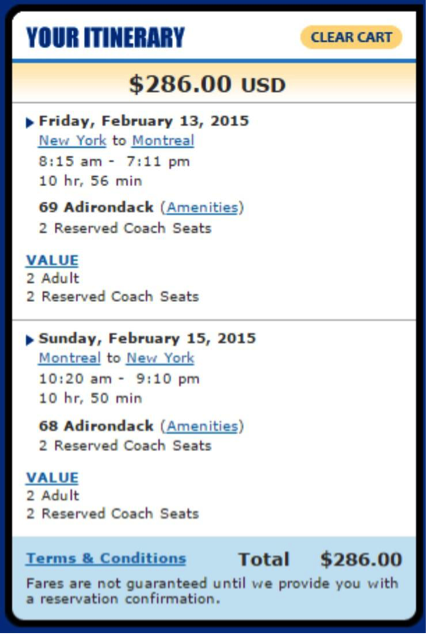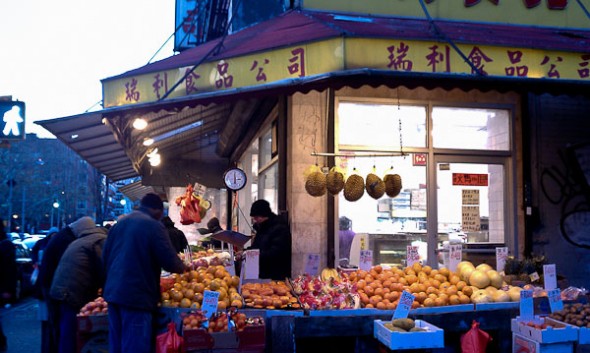Video
My favorite gear for travel assignments.
The Challenge
Pretty much every day, and especially since my TED Talk, I’ve been getting messages asking about production techniques or which lens, camera or gimbal to buy.
Some questions are relatively easy to answer, for example, “I’m using the Panasonic GH4 and plan to update to the GH5. Have you seen a significant increase in quality and features?” (Answer: Yes.)
Some are much harder to answer, especially when people don’t provide enough context like budget, or if they are shooting locally or overseas. Obviously these considerations should have a significant impact on what and how much can you pack.
The Solution
It’s becoming impossible to reply to everybody in a timeline manner. To simplify things I’ve created a list with the filmmaking gear I’m using most often for travel assignments, especially when working alone or with a skeleton crew. The list isn’t organized in any particular order. I just kept adding stuff as I was thinking on how I unpack and prepare for a travel assignment. I am not including super obvious things like HDMI cables or battery chargers, but added a few things that are easy to forget, like international power adapters, or difficult to find. Among those thins are the exact kind of SD card one needs to shoot 4k 422 10 bit at at 400 mbs.
Disclosure
I participe in Amazon’s Associates Program and B&H’s Affiliate program, but I only recommend products that I use and trust. Some links are affiliate links which means I may get a few pennies if you decide to purchase something.
Video

100 days, 10 travel tips.
This week we are celebrating our first 100 days traveling around the world. We plan to complete a year, from New York through Europe, North Africa, Southeast Asia, Australasia and ending somewhere in California.
In today’s article I’d like to share the 10 most valuable lessons we’ve learned so far, formatted as quick tips for anyone considering long-term trips.
Disclosure
This article is NOT paid or sponsored by anyone, it is an independent review and only reflects my personal opinions. I only recommend products that I use and trust. Some links are affiliate links which means I may get a few pennies if you decide to purchase anything.
Cool? Lets go!
1. CHOOSE A HOMEBASE
The more you move, the more you spend. Short trips are usually the most expensive. But even more important than money is the psychological/emotional aspect of having a base. It sounds wonderful to visit five cities in four days, but after a few weeks of packing and unpacking every night it gets very tiring.
Having a base allows you to set a rhythm, to buy groceries lowering costs and eating healthier, do your own laundry, rest, and give each other some vital “alone” time. Also, staying in one place for several days or weeks allows you to truly get into the rhythm of local life, understand the neighborhood, the transportation system, get a grasp of local politics and issues, make friends and visit locations off the beaten path.
In the past 100 days we had a base in Portugal for about six weeks near Lisbon, one week in Madrid, one week in Barcelona, one week near Lucerne, and two weeks near Verona. That’s roughly 75% of the time; the other 25% was spent staying one or two nights at a location.
How do you find a place? My grandfather always said that “it’s much better to have friends than money.” I couldn’t agree more. We are blessed to have extremely generous friends who offered us their homes, but another option that has worked out fairly well for us is Airbnb (use this link to get $35 off your first booking).
2. PICK SMALLER CITIES
I believe it is much better to pick a homebase in smaller cities or towns. People are usually friendlier, it is easier to move around and park if you have a car, and it is definitely cheaper. My rough estimate so far is that it’s 20% cheaper to live 30 minutes from a big city, and that’s including transportation costs. The moment when you realize the local barman, waitress, and baker knows you by name and you know theirs is truly magical.
3. KEEP A CLOSE EYE ON YOUR BUDGET
I’ve been using a fantastic mobile app called AndroMoney (Android and iOS) to keep track of all our expenses.
At first, it takes some time to customize and get used to this app, but after a few days of entering every transaction the process only takes a matter of 10 seconds. You can create all kinds of reports and export them to Excel, Google Drive, etc. A very powerful tool that I consider essential.
Thanks to AndroMoney I know that as of today 50% of our budget has been allocated to food (restaurants and groceries), 20% to airfare and roughly 25% to hotels (including Airbnb).
We are currently a bit over budget, but considering that we have been in some very expensive destinations (northern Italy, Barcelona, Switzerland) we are doing fine. Our next destinations (Morocco and Southeast Asia) seems to be much cheaper, and we plan to lower our daily average by staying longer at each place and cooking more often.
4. KEEP IT LIGHT
Avoid over-scheduling and over-packing. It is very tempting to cram your day with two museums, three historical sites, a walking tour, watch the sunset, and feast upon a fancy three-course dinner at a Michelin-rated restaurant. Don’t.
We’ve found that regardless the city and price, lunch in Europe takes at the very least one hour and dinner usually two. Museums are big and crowded. It is inevitable to get lost in most old cities, so instead of rushing through your day to get things done, prepare yourself to enjoy those wonderful random discoveries.
Packing is a big topic. We are each traveling with one carry-on and one small daypack. Keep in mind that I’ve somehow managed to fit in a complete photo and video production system and a post-production workflow. I’ll cover this topic in a future article, but for now you might want to watch this free online course “How to pack light.”
5. BRING THE RIGHT GEAR
In order to pack light one must pick the right bag, clothes, and gear. Even seemingly small decisions like choosing the right socks or underwear can make a big difference for long-term travels.
We are 200% happy with our Osprey Ozone Convertible bags. They are extremely well made, very light and more importantly the perfect size. Cheap airfares aren’t so cheap when you start adding baggage costs, which can easily double or triple the original price. Spending 45 minutes waiting at the baggage claim is nothing but a waste. And having your suitcase lost or delayed can turned into a real logistical nightmare, especially if you aren’t staying at a single place for more than a day or two.
These few items have been exceptionally useful:
- Icebreaker long sleeve crewe top have been truly essential. The difference between comfort and discomfort in cold climates is long underwear. Merino wool costs more, and it’s worth every single penny as it lasts a lot longer without washing.
- Exofficio t-shirts – Extremely light and comfortable. You can wash them at night and they are dry in the morning.
- Exofficio underwear – Just like the t-shirts they are made from lightweight, antimicrobial treated fabric that reduces odor and wicks away moisture.
- Eagle creek organizers – I wasn’t too convinced about the benefits of these organizers. Now I preach the gospel. There’s no easier and faster way to fit a lot of stuff into a tiny bag. Get two smalls and one or two medium. The large is way too large
- Tenba toolboxes – I use a variety of these padded boxes to keep all my hard drives, cables and gadgets organized and well protected.
- Panasonic Lumix GX85 with a 12-35mm f/2.8 lens. 99% of these photos were shot with this tiny yet super powerful camera.
- Google Project Fi – Thanks to Project Fi I’ve had internet access in every single country so far. I’ve been able to call taxis, find hotels and restaurant, get directions, etc thanks to Project Fi. It still has some wrinkles, especially when it comes to billing “errors” but currently there’s no better/cheaper alternative.
- Small Power Outlet. I only need ONE universal adapter to recharge all my gadgets.
- Very comfortable walking shoes are mandatory. We’ve walked an average of 25,000 steps each day. My favorite are the good old New Balance and my wife’s are some fancy Nike. I also have one pair of these extremely comfortable sandals.
Things we brought that have rarely (or haven’t) used:
- Speedo Towel
- Flashlight
- Technical bra (“too big and has no support”)
- Paper maps
- Travel Umbrella
6. KEEP A PERMANENT ADDRESS
I won’t lie; every time a hotel clerk asks “what’s your permanent address” and I answer “I don’t have one, we are traveling around the world” I feel insanely happy. But in reality, you do need a permanent address where you can receive mail, bills, checks, etc. We forwarded our mail to my sister’s place in Atlanta, but I didn’t anticipate how involving and tedious her role would be. “Is this letter important? What should I do with this bill? You got a check. You got a new credit card.” There are companies that provide this service and had I known this, I would have paid the fees instead of putting this burden on my sister.
7. BRING MULTIPLE CREDIT CARDS
I’ve been using both the Chase Sapphire (double points on travel and dining expenses) and Citi Prestige (triple points for hotels and airfares) for a very long time. Chase is a Visa and Citi is a Mastercard, which usually works great. But some places like tolls in Portugal, some museums in Spain or local trains in Italy don’t accept international credit cards so you need cash.
By far the best way to get cash is from an ATM and using a debit card. Never use a credit card to get cash, as it will be considered a cash advance with outrageous daily interests as high as 30%! Also keep in mind that even if a store accepts credit cards and you need to enter a pin, it might be considered a cash advance, so better be safe than sorry and pay cash.
For security reasons I keep one credit card and some cash in my wallet, and the second credit card, debit card, and some cash somewhere else. Even though both Chase and Citi claim to have no international transaction fees, the difference between the official exchange rate and the actual charge is always around 1.5% more. This seems to be a constant even though the US dollar has been the strongest against other currencies in 13 years. Oddly enough, the ATM transactions also add a 1.5% “fee” over the official exchange, so I haven’t found “the best” solution yet.
8. DEVELOP A DAILY ROUTINE
Imagine waking up to the sound of the waves and seeing the sun rise over the horizon. Then picture yourself reading a fat book in a hammock while sipping a refreshing cocktail, and then napping next to the pool before writing a blog post and answering a few emails. Not really. You will be spending a lot of time on planes, buses, and trains, planning where to eat, where to go and where to stay next, doing laundry and cleaning the dishes, getting lost in supermarkets, finding parking, and looking in earnest for the restaurant that closed a month ago. Internet is shitty in most parts of the world, so your “internet time” will be anywhere and anytime you find a decent connection.
I strongly recommend developing a daily rhythm as soon as possible, regardless of the country you are in. For example, we wake up around the same time each day, exercise for a while, eat a good and healthy breakfast, and head out to explore. We stay home most evenings, editing photos or videos, writing, working, watching movies, reading, etc. That being said, having a day or two each week of unstructured time to simply stay home is essential, otherwise it is easy to get overloaded with information.
9. GET LOCAL RECOMMENDATIONS FROM LOCALS
We usually ask locals for lunch recommendations; “a local and inexpensive place that YOU like to frequent with your family or friends” usually does the trick.
Nine times out of ten we are surrounded by confused locals who stare at us like we come from another planet, the food is abundant and amazing, and the price is a fraction of the tourist trap.
10. LEARN ABOUT THE LOCAL CULTURE IN ADVANCE
After many years and visiting more than 50 countries I’ve learned that the best way to develop friendships is by learning a few words of the local language, reading in advance about the local culture, political and economical issues, geography, and history.
“Is there a place nearby that most tourists miss?” is often a fantastic way to break the ice and access spots and events that otherwise you would have missed. For example, this week I photographed the first crush of Amarone grapes in Valpolicella, participated in a professional wine tasting, visited the remains of the border wall from WWI between Austria and Italy, and walked the city where Mussolini built his last mini-state. All for asking ONE very simple question: “How come the prices for Amarone have remained the same for the past 10 years while the cost of grapes have increased sixfold?”
Having substantial time off is a blessing and a luxury. How you invest or waste that time definitely has a lot to do with how you approach each and every day.
We’ve been sharing our favorite photos on Instagram (here and here) please follow us and join our journey!
Video
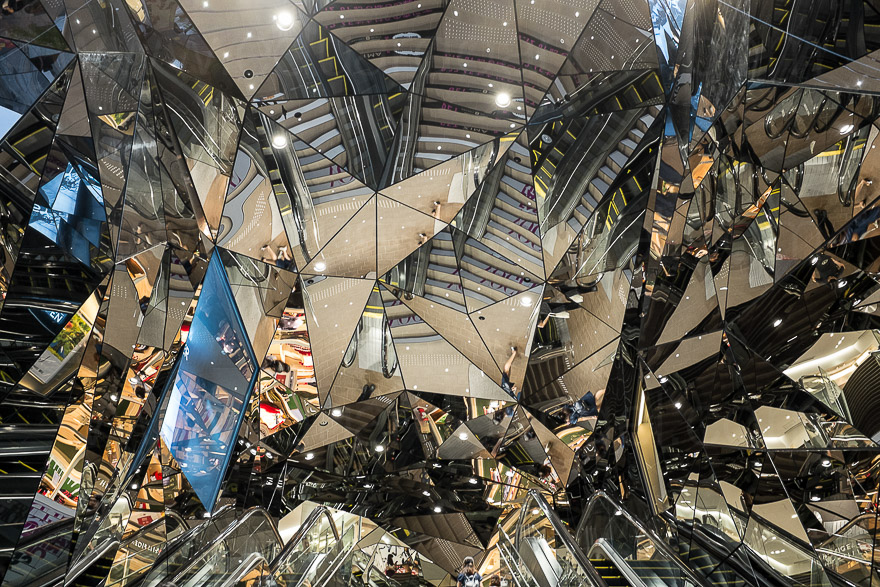
A filmmaker’s perspective on Japan.
Back in 2011 I made the best decision of my life: to get engaged. Wanting to “pop the question” at an unforgettable location, I asked my wife, then girlfriend, to write down her top five destinations that she had not yet visited. Coincidentally, and even though we both have traveled extensively, her first pick matched mine: Japan. The decision was made, air tickets were purchased, and hotels booked, but the timing was off. Just a few days before our departure, and with the ring well hidden in my camera bag, the Tohoku earthquake hit Japan. It was the fourth most powerful earthquake in the world since modern record keeping began in 1900, and the most powerful earthquake ever recorded in Japan.
A few weeks ago we FINALLY had the chance to visit this incredible country and culture, and on this article I’d like to share some of the most amazing things we learned and saw. Like some of my previous videos there’s a generous mix of stills, videos, soundscapes, music and narrations.
First things first
Most of us learned in school that Japan closed its borders in 1639 for more than 200 years, keeping only one seaport open for foreign trade exclusively with Dutch and Chinese sailors. A lot has changed, of course, and the country is currently the world’s third largest economy after the United States and China. This is truly a miracle for a nation that consists of more than 6,800 islands, has a population of 127 million people, and is smaller than the states of Montana or California.
As a little kid I spent countless hours poring over my grandparents National Geographic magazines. I dreamt about far and exotic places like “Antofagasta,” which I related to cannibals, “Ushuaia,” which to me was a synonym for the end of the world, “Oaxaca,” which I imagined full of little skulls everywhere, “Marrakesh,” with stunning belly dancers and crazy sword-fighting warriors, and “Kyoto,” elegant, peaceful, and extremely expensive. I loved the sound of each place.
Now, a “few” years later, I’ve had the privilege to visit all of these magical places and work in well over 700 cities in 50 countries, covering 40% of the world (according to Tripadvisor). Compared to my childhood pipe dreams, some countries have been much more interesting (Hong Kong and Thailand), and a few hugely disappointing (Russia and Vietnam top that list). There are no cannibals in Antofagasta, you can see little skulls in Oaxaca for “Dia de los Muertos,” and Ushuaia can’t be described in words. But Japan, in fact, so far, has been the one experience to closest match my dreams.
A World of Contrasts
If I had to define the country in a single word it would be contrast. Not necessarily as in the wide social and economic disparities one sees in India, China, or South America, but in the everyday culture itself; super-modern buildings next to architectural crimes, decadent meals followed by inedible dishes, massive pedestrian crossings and jam-packed subway cars followed by serene gardens, and very polite and quiet people during the daytime that get insanely wild and loud after dusk.
Random Fun Facts
Coming from New York, it always strikes me how clean and quiet other large cities are in comparison. Even Los Angeles and Houston seem muted in comparison. In that regard, Tokyo, the most populated metropolitan area in the world, is impossibly silent. And spotless. And huge. For example, Tokyo doesn’t have an actual downtown, but 23 of them, some with a daytime population seven times higher than their nighttime population.
Having been born in Colombia and experiencing first hand the country’s well documented violence during the 90s, it is hard to grasp how Japan, with the tenth largest population in the world can have the second lowest homicide rate, with only TWO gun-related homicides per year, and a conviction rate close to 99%. My brain can’t even process that information.
There are many fascinating things about Japan, from the expected, like magnificent temples, pristine gardens, and stunning package and lighting design, to the highly unexpected like the super-salty cuisine, and the lack of English speaking people and information in English even in popular tourist areas. Regarding tourism, we based most of our itineraries on Frommer’s and Fodor’s guides, which proved to be excellent sources of information.
We also tried to understand why there are virtually no public trash cans, but no garbage on the streets, millions of people everywhere, but no benches, and restaurants with vending machines, but no napkins. I’m still looking for those answers. Please hit me on Twitter if you have a good guess. And, speaking of Japanese vending machines, one can use any of the 5.5 million to buy beer, wine, canned coffee, cigarettes, food, comic books, toilet paper and even “adult literature and pleasure products.”
To widen our Japanese experience, we stayed at a high-end hotel in Tokyo, and at a Ryokan in Kyoto. The Ryokan, a traditional Japanese inn with tatami floors, paper blinds, a low table for tea and super tiny pillows, provided a unique, but not very comfortable, experience. As an added bonus we located a Ryokan that offered a private Onsen, or spring bath, that was masterfully built with exquisite wood, and harvested the local volcanic waters. Of course, Japan being Japan, even this relaxing moment had many strict rules to be followed in precise order before even touching the water. Overall it was an interesting experience, especially after walking 30,000 steps each day (according to my wife’s pretty handy Fitbit).
One early morning we got the rare opportunity to attend sumo training. As architecture buffs we used some rainy afternoons to visit buildings and stores by our favorite Japanese designers. We tried hard to cover as much of the Japanese culinary spectrum as possible, from quick lunches at shopping centers’ basements, vending machines, and food trucks, and dinning at traditional Izakayas where we tried delicious Yakitori and horse sashimi.
We obviously “had” to fit in a few Michelin-rated restaurants as the respected “foodies” publication has awarded Tokyo the most stars of any city in the world. More than the food itself, the service, presentation, and attention to detail are what truly offers a remarkable experience.
More Random Facts
Japan imports 85% of Jamaica’s annual coffee production, but the fancy coffees we tried were consistently inconsistent. I might get shot for saying this, but the $1 coffee at 7-Eleven was MUCH better than most of the $8 fancy brews we tried. And I’m Colombian, I do know my coffee.
Japan is also the world’s top importer of reggae music and has the largest proportion of jazz fans in the world. We treated ourselves with a jazz concert (and grossly overpriced drinks) at the Park Hyatt‘s bar, from “Lost in Translation” fame. The city views from the fancy bar are great, especially at nighttime, but you get pretty much the same view for free only two blocks away, from Tokyo’s Metropolitan Government Building, where you can also get a very filling lunch for about six dollars.
Gulping down your drink and slurping is NOT considered bad manners (mom, are you reading this?), but somehow eating or drinking while walking down a street is considered very rude and nobody does it. The Zen proverb “When walking, walk. When eating, eat” is silently but effectively enforced all the time, and everywhere. One day we had to go back to our hotel, just a few blocks away, to finish our Bento box lunch.
We did enjoy bowing on meeting someone, but sitting on the floor with your hands in your lap and your legs tucked under you, not so much. Perhaps because I’m less flexible than a tree. When wearing my first kimono I created a small “fashion emergency” with the Ryokan’s owner, as one should always wear the left side over the right side. The opposite of this is only observed at funerals. Something similar happens with chopsticks; do not point them at other people, never wave them in the air or stick them upright in the rice, since they’ll look like sticks of incense at a funeral. How are you supposed to know all this?
Cash is definitely king, and many ATMs in Japan do not accept international debit cards, with the wonderful exception of the ATMs found at the 10,000 7-Eleven stores. Coins are required for buses, trams, and lockers. We had read that Internet access was horrible, but I have to disagree. Both our hotels, many subway stations and bus stops provided free Internet access. If all you need is checking your map or access something on Dropbox you should be fine. If you are planning to stream movies or video games, stay home.
Packing Tips
In terms of packing, we broke a new personal record for this trip. We were able to fit everything into ONE suitcase. In case all the women reading this article are wondering, yes, my wife wasn’t too happy at first, but she came to appreciate my logic while navigating major transport hubs like Shinjuku, which serves 4 million passengers a day, and holds the title as the world’s busiest station.
In addition to the single suitcase, my wife had a very light daypack, and I brought my favorite photo backpack.
Regarding photo and video equipment, I’ve been traveling extremely light and small. This time I brought two Panasonic GH4s (Amazon • B&H), two Panasonic Lumix lenses (Amazon • B&H) , and a Fuji X100S (Amazon • B&H). This is pretty much the same gear I’ve used on assignments in Europe (article on Sigma’s website), Turkey, and commercials like this.
Something I failed to pack (and struggled to find in Tokyo) was a “3-Prong to 2-Prong Adapter.” Considering one can get two for $6 on Amazon, it was very painful to waste precious time walking from store to store and trying to explain what a “3 prong” means with body language and childish drawings. To connect multiple devices I ALWAYS bring two essential items: a mini power strip to charge phones, batteries, and laptops using a single outlet, and a compact USB hub, to connect multiple hard drives to my laptop. This year I’ve been using these small and cheap external hard drives on my travels, and so far they’ve worked perfectly. If you are interested in seeing what’s inside my camera bag, I wrote an article with “The Essential 41 Items” for photography and video assignments.
The Final Product – The Video
Shooting stills, and video, and recording soundscapes while traveling alone is hard, I’m not gonna lie. Doing all that with your (extremely patient) wife is even harder, but totally worth it.
Obviously it’s impossible to understand a country, city, or even a neighborhood in just a couple of weeks. I’ve spent nine years in New York and every weekend we find something new to do, see, or eat. But, we only have one chance to get a first impression, and I believe those first reactions are great ways to identify interesting trends and cultural differences.
The video below has tons of additional information about Japan in general and our travel adventures in particular. If you like traveling—and eating delicious food—I’m sure you will enjoy it, and if you do, please SHARE the love!
If you are looking to expand your creative options by adding video into your skills set or enhance your craft, don’t miss these courses on Lynda.com.
Video
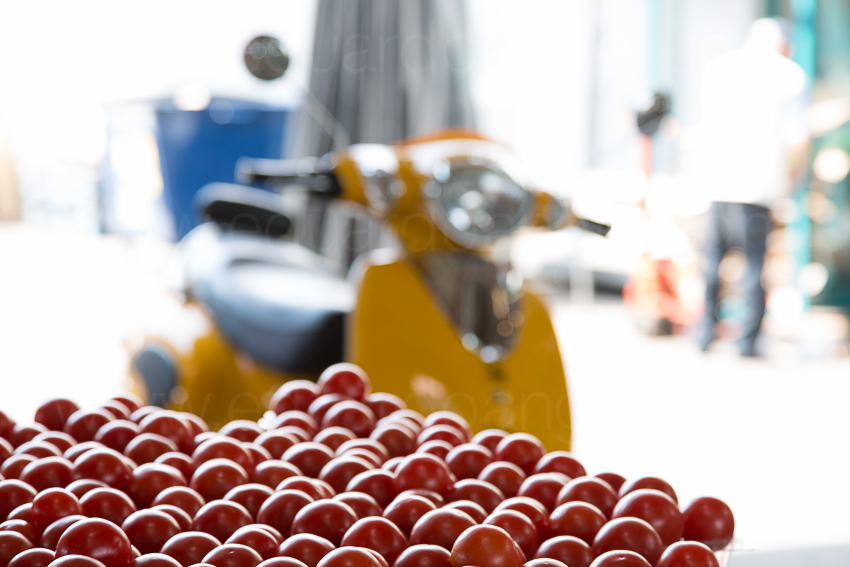
How to spend Valentine’s Day in Montreal for under $500.
I read somewhere that Valentine’s Day is the second most popular card-sending holiday after Christmas with over 150 million exchanged in the U.S. alone. I know, totally random fact, but kinda cool.
Saint Valentine’s Day, also known as Valentine’s Day or the Feast of Saint Valentine falls on February 14 each year. Researching my travel options for an upcoming video project in Montreal, I thought “wouldn’t be nice to go to Montreal, just for a weekend, without having to spend a fortune?”
So I called my friend Esteban Mahecha who is the most knowledgeable person I’ve ever met on anything related with travel and fine dining. The idea is to spend Valentine’s weekend, walk around that wonderful city, see some friends, stay somewhere comfortable, and eat really well, all for under $500 for everything. Doable? You bet it is, when you are Esteban Mahecha. Here are some images I’ve shot on previous trip to this amazing city.
Here’s his complete itinerary with actual prices and live links. Keep in mind that we are considering departing from New York City, so things might change depending where you live.
1. You’ll depart on Friday February 13th. The cheapest way to get to Montreal from New York is flying. You would need a total of 18,000 Avios points plus $110, for (2) people. So you know, Avios is the reward currency of the British Airways Executive Club. The fastest and easiest way to rack up Avios in a hurry is via rewards credit cards including British Airways Credit Cards, Chase Sapphire Preferred (transfer partner), American Express Membership Rewards Cards (transfer partner), Starwood Preferred Guest Amex (transfer partner). Complete info about Avios here.
Cost: $110 for both roundtrip air tickets from New York City. We have $370 left.
Taking a train is also a nice alternative. It takes about 11 hours, but as you already know, it is a wonderful experience. The #68 Adirondack departs at 8:15 am, and arrives in Montreal at 7:15pm. You could easily take the train and have dinner reservations for 9pm, but it would cost $286 for both train tickets round-trip.
Considering the commute to the airport (1 hour from your place in Brooklyn), plus at least 90 minutes at the airport before the flight (it will be packed), plus 90 minutes in the air (for a direct flight) and another hour from the airport to the hotel you really save about 6 hours by air as opposed to the train, and might add a lot of stress. Delays are also highly likely on Friday nights from all New York airports. But, to keep our budget under $500 we’ll choose to fly.
2. Taxi rates are fixed at $40 from the Montreal’s airport to downtown. There’s an express bus (#747) for $10 that will take you to downtown in roughly 45 minutes to an hour, depending on traffic. The bus fare gives you a 24h pass good for the métro (subway) and on-island busses run by the STM, Montéal’s transit authority, so by taking the bus you save $20 and have subway tickets until Saturday night.
Cost: $20 for both express buses from the airport to the hotel. We have $350 left.
3. The hotel, typically the most expensive aspect for most people can be had for only $190 including taxes, for two nights at a highly-rated 3-star hotel right in the heart of Montreal’s Historic City Center. Cost: $190 (including taxes). We have $160 left.
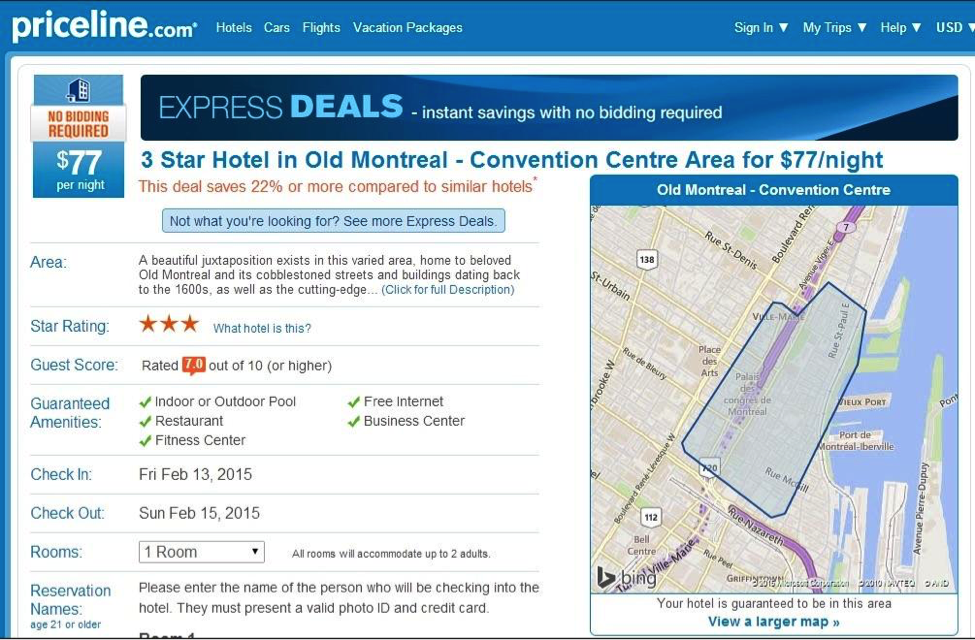

4. Now, you want to eat at a couple of nice places, something much easier to achieve in Montreal than New York. You can get brunch or an excellent sandwich for around $25 for two without alcohol. With Saturday and Sunday lunch/brunch we have $112 left.
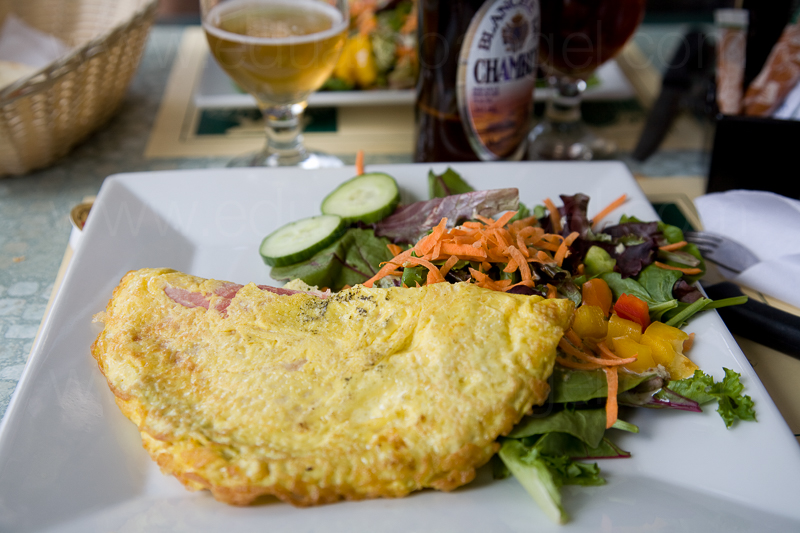
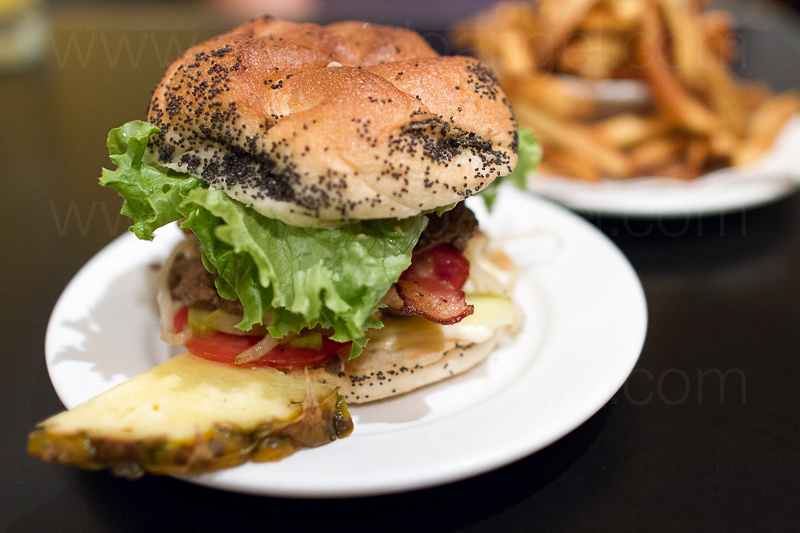
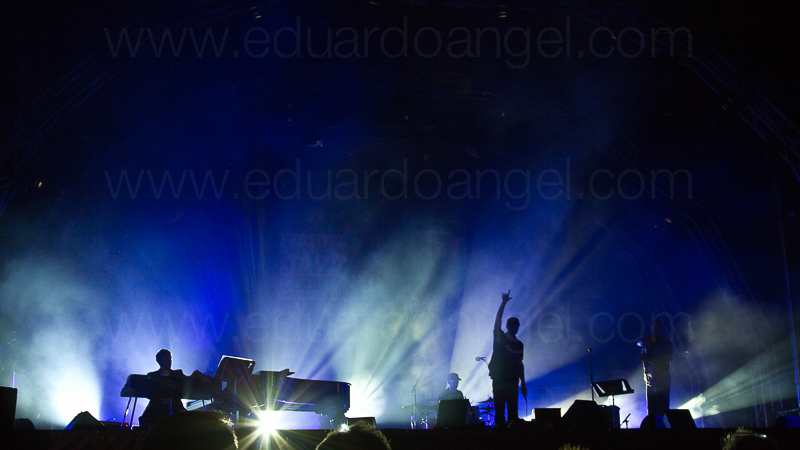
For your fancy dinners I’d recommend:
Friday Night: Restaurant L’Express. Dinner for two $60.
A 32-year-old institution in the fashionable Plateau neighbourhood, is a proper French bistro, run by a chef from Toulouse and a remarkably enlightened owner who still writes the menus with a fountain pen. It is French bistro cooking: superb calf’s liver seared hard to medium rare, with good frites and house-made mayo; fish soup stirred with garlicky aioli and crumbly cheese toasts; aspergesvinaigrette; pitch-perfect tarte au citron.
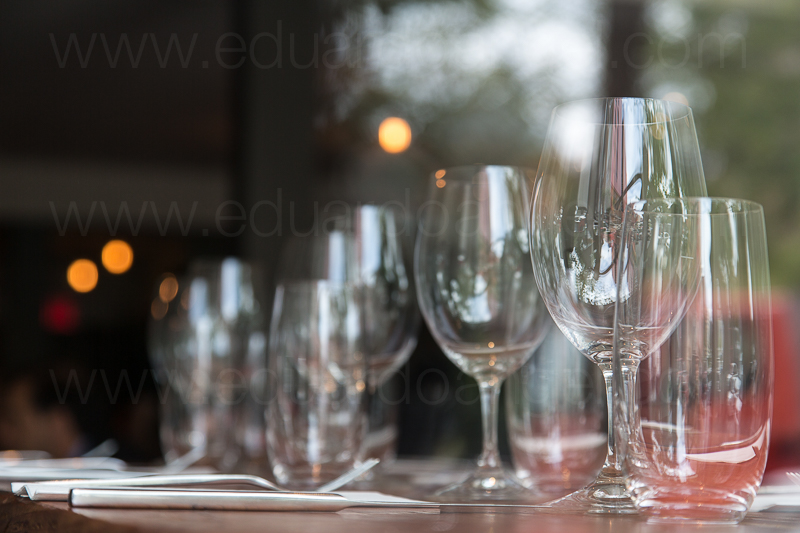
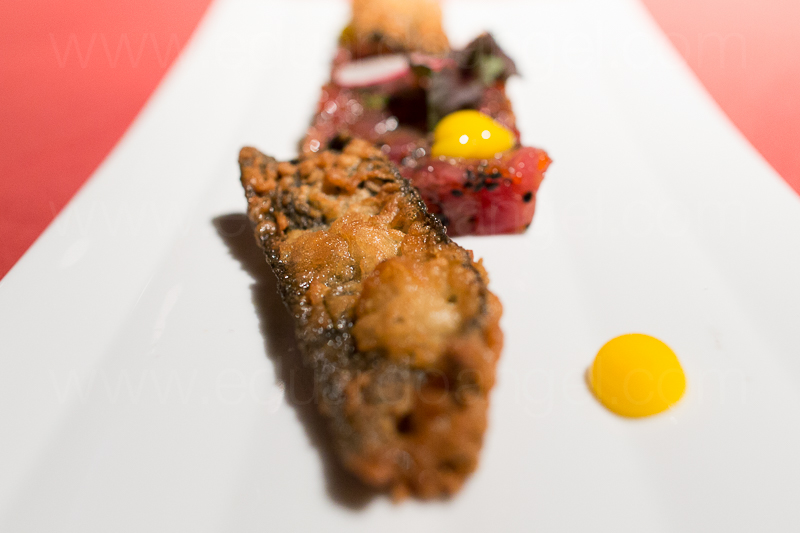

Saturday Night: Au Pied de Cochon. Dinner for two $70.
Chef Martin Picard’s bustling, rustic restaurant, open since 2001, has earned a cult following for its modernized, over-the-top (and insanely rich) take on traditional Quebecois food. There’s a gonzo edge to the hallmark dishes here: stuffed pied de cochon (pig’s foot) the size of a forearm, duck poached in a can (and opened at the table) and foie gras–topped poutine (the signature Québécois dish of French fries and cheese curds smothered in gravy). A lesser-known highlight: Picard sources seafood from Eastern Quebec and the Canadian Maritimes from late spring through early fall, transforming his place into one of the city’s finest fish restaurants.
5. With both dinners we are down $20. You will need another $20 for the express bus back to the airport, so we are down a $40 for the whole trip.
Sorry I couldn’t do it for under $500, but $540 for the complete trip it’s not too bad!

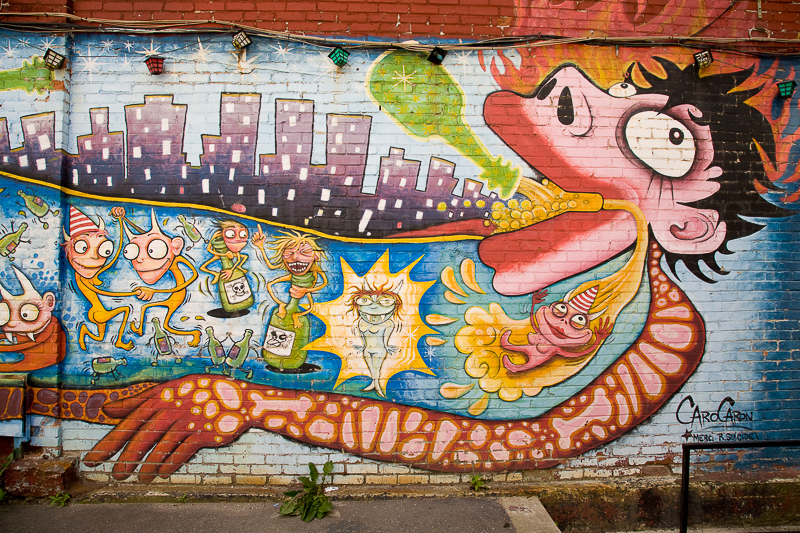

Photography

My Asia • eBook (iPad version)
There are tourists and there are travelers. The tourists are afraid of the unknown, the different. You see them eating at Subway or McDonald’s right next to the local food market. Travelers adapt to local customs, eat what the locals eat, enjoy trying new things, push their boundaries, embrace feeling uncomfortable, and have a blast getting lost.
“This magical book is a true traveler’s photo journal in South East Asia.” The Armchair Traveler.
Click here to purchase My Asia • Photo eBook (iPad)now.
The PDF version is available here, and the printed version from Blurb is here.
Photography
Discovering Cirque du Soleil Las Vegas: Visual Serendipity.
I recently met two acrobats from one of the eight shows in Cirque du Soleil Las Vegas. A multinational spectacle, Cirque du Soleil uses the imagination, arts and creative talent to present a show like no other. (more…)
Video
Maps and the end of distance.
Maps are hot. Or that’s what it seems, since Apple is ditching Google Maps software on its latest iOS 6 and bringing turn-by-turn directions, 3D flyover, local search, Siri integration and more to iPhone and iPad users sometime this fall on their own Maps app.
Google, never the shy one, release an update to Google Maps with amazing 3D fly-over technology, biking and walking directions (I use both all the time), indoor maps, live traffic, and public transportation (including schedules!). The best new feature? Offline Maps: users can see and interact with the maps, even if without internet connection. All devices running Android OS 2.2 and above will be supported.
It is amazing that in cities like New York or Los Angeles distances determine where we live and work, on which activities we engage, the areas we discover and even our dating patterns. Due to the good public transportation in the Netherlands distance has become irrelevant. “We can reach almost any destination by train easily and relatively quick. In our busy lives we now think in time rather than distance. Therefore the current maps, as we know them today, are obsolete. Thinking in time affects a map and hence the shape of the Netherlands also depending on the perspective from which we look.”
Maybe one day we will have something like this in the U.S. Or maybe not.
Photography
Visual Serendipity.
Serendipity: noun; the occurrence and development of events by chance in a happy or beneficial way.
“Chinatown at Dusk” is the second picture on our “Visual Serendipity” weekly series. The goal is to post a new cell phone image every week (click here to see last week’s pic).
For years I’ve been fascinated with Chinatown. So many things going on, so many colors, smells, and sounds at a somewhat isolated place in the hearts of very dense cities like New York, Chicago or San Francisco. What intrigues me the most about ethnic neighborhoods like Chinatown is to walk into a corner store (how do you say “bodega” in Chinese?), and see things that I can’t tell if are vegetables, animals, medicine, food, toys or decorations.
An added bonus the restaurants which are amazingly good and cheap! One of my favorite spots is Vanessa’s Dumpling House, what’s yours?
Video
Around Europe in 3 minutes.
Three weeks traveling in Europe, frozen into 270 images, and compressed into 3 minutes. Fantastic music by Astor Piazzolla. Some of the cities visited: Berlin, Milan, Gargagnago, Verona, Venice, Frankfurt, Cologne.
European Journey. from Eduardo Angel on Vimeo.



